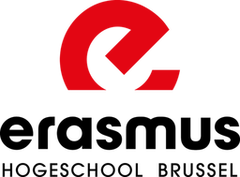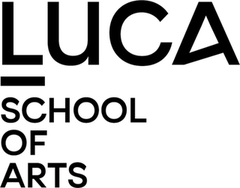Lorem Ipsum Dolor Sit Amet Consectetur
Betrokken bij de samenleving. Betrokken bij lokale initiatieven. Betrokken bij ostrud exercitation ullamco laboris nisi ut aliquip ex ea commodo consequat. Duis aute irure dolor in reprehenderit in voluptate velit esse cillum dolore eu fugiat nulla pariatur.
Lorem ipsum dolor sit amet, consectetur adipisicing elit, sed do eiusmod tempor incididunt ut labore et dolore magna aliqua. Ut enim ad minim veniam, quis nostrud exercitation ullamco laboris nisi ut aliquip ex ea commodo consequat. Duis aute irure dolor in reprehenderit in voluptate velit esse cillum dolore eu fugiat nulla pariatur.
Excepteur sint occaecat cupidatat non proident, sunt in culpa qui officia deserunt mollit anim id est laborum. Donec elementum ligula eu sapien consequat eleifend. Donec nec dolor erat, condimentum sagittis sem. Praesent porttitor porttitor risus, dapibus rutrum ipsum gravida et. Integer lectus nisi, facilisis sit amet eleifend nec.
Literatuurlijst
- Bakker, A., & Akkerman, S. (2014). Leren door boundary crossing tussen school en werk. Pedagogische Studien - Tijdschrift voor onderwijskunde en opvoedkunde, 91, 8-23. Opgehaald van Pedagogische Studiën: https://pedagogischestudien.nl/search?identifier=616421
- Bouw, E., Zitter, I., & de Bruijn, E. (2019, februari). Characteristics of learning environments at the boundary between school and work – A literature review. Opgehaald van https://www.sciencedirect.com/science/article/abs/pii/S1747938X18301763?via%3Dihub
- Bouw, E., Zitter, I., & De Bruijn, E. (2019, mei). Integratieve leeromgevingen op de grens van school en werk. Opgehaald van https://husite.nl/nieuwslectoraatberoepsonderwijs/wp-content/uploads/sites/184/2019/05/Vakblad-Profiel-04-2019-p12-13-Erica-Ilya-Elly.pdf
- Bremekamp, R., Kaats, E., Opheij, W., & Vermeulen, I. (2010). Succesvol samenwerken; een kompas en aanbevelingen voor betekenisvolle interactie. Management review, 8-15.
- Edmondson, A. C., & Harvey, J.-F. (2017). Extreme teaming: Lessons in Complex, Cross-Sector Leadership. Bingley, United Kingdom: Emerald Publishing Limited.
- Ehlen, C. (2021). Co-Creatie-Wiel - COCREATA. Opgehaald van Cocreatiewiel: https://cocreatiewiel.nl
- Ehlen, C., van der Klink, M. R., Stoffers, J. M., & Boshuizen, H. P. (2017). The Co-Creation-Wheel : A four-dimensional model of collaborative, interorganisational innovation. European Journal of Training and Development, 628-646.
- Ehlen, C., van der Klink, M., & Boshuizen, E. (2015, juni). Co-Creatie-Wiel: instrument voor succesvolle innovatieprojecten. Opgehaald van https://www.ou.nl/documents/40554/383618/2015_OI_2.pdf/4d831f69-92b7-5455-bddf-159edb5d1cec
- Gouillart, F., & Hallett, T. (2015). Co-creation in Government. Stanford Social Innovation Review, 46. Opgehaald van https://ssir.org/articles/entry/co_creation_in_government.
- Hoeve, A., & van Vlokhoven, H. (2017, december). Werkplekleren, Onmiskenbare 'inwijding' in het beroep. Opgehaald van https://canonberoepsonderwijs.nl/pedagogisch-didactisch/werkplekleren/
- Lombardi, M. M. (2007). Authentic Learning for the 21st Century: An Overview. Opgehaald van https://www.researchgate.net/publication/220040581_Authentic_Learning_for_the_21st_Century_An_Overview
- Ministerie van Buitenlandse Zaken - ontwikkelingssamenwerking. (2007, april 19). Kopie van `Ministerie van Buitenlandse Zaken - ontwikkelingssamenwerking`. Opgehaald van ENCYCLO.NL - Nederlandse encyclopedie: https://www.encyclo.nl/lokaal/10596
- Nieuwenhuis, L., Hoeve, A., Nijman, D.-J., & van Vlokhoven, H. (2017). Pedagogisch-didactische vormgeving van werkplekleren in het initieel beroepsonderwijs: een internationale reviewstudie. Opgehaald van https://www.nro.nl/sites/nro/files/migrate/reviewwerkplekleren_405-15-710.pdf
- Nigten, A. (2015). Co-creatie en creativiteit, sleutelbegrippen voor innovatie. Opgehaald van
- Onderzoeksinformatieportaal van de Hanzehogeschool Groningen: https://research.hanze.nl/en/publications/co-creatie-en-creativiteit-sleutelbegrippen-voor-innovatie
- Rill, B. R., & Hämäläinen, M. M. (2018). The Art of Co-Creation. Singapore: Palgrave Macmillan.
- Tynjälä, P., Heikkinen, H. L., & Kallio, E. K. (2020). Professional expertise, integrative thinking, wisdom, and phronēsis. In Development of Adult Thinking (pp. 156-174). Opgehaald van https://www.researchgate.net/publication/339880414_Professional_expertise_integrative_thinking_wisdom_and_phronesis
- Van Hove, A., & Desseyn, J. (2017, juni 27). Welke competentieverschuivingen verwachten onze Vlaamse bedrijven? Overkoepelende analyse van elf studies over toekomstige competentiebehoeften. Opgehaald van Kennisplatform ODIN: https://odin.vlaanderen.be/onderzoek-en-beleid/welke-competentieverschuivingen-verwachten-onze-vlaamse-bedrijven
- Weemaes, S., & Bruneel, J. (2017). Retrospective case study - SHINE project report. Opgehaald van https://issuu.com/pomwest-vlaanderen/docs/shine_retrospectivecasestudy_projec?e=28759921%2F57624463






